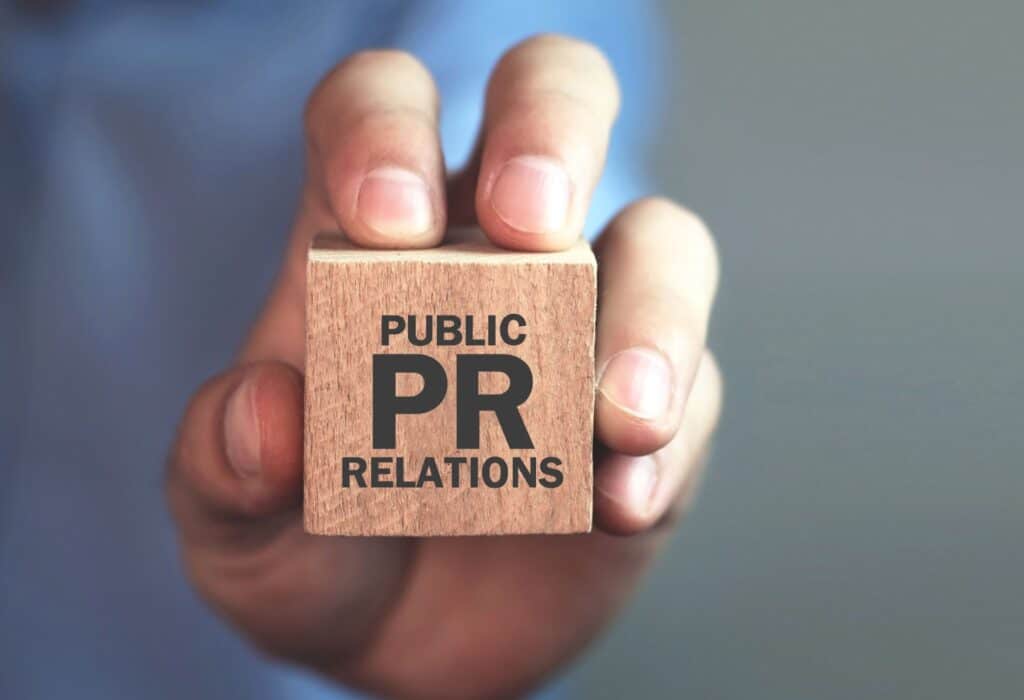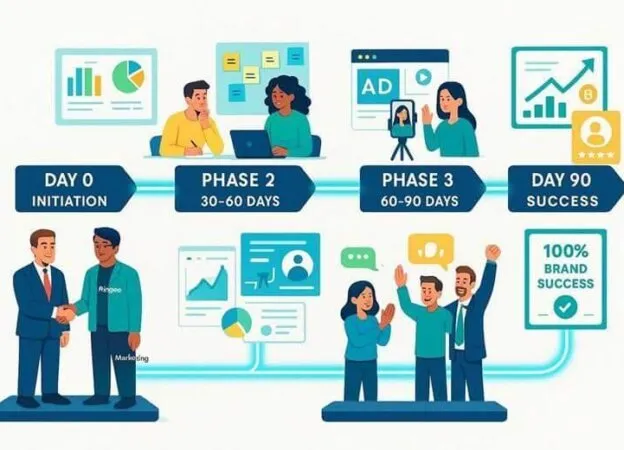Public relations (PR) is essential for building brand awareness and credibility for a successful business. However, developing a strategy on a tight budget can be challenging. The good news is that it’s possible.
In this article, you’ll learn how to identify your target audience, create a strong message, develop a plan of action, and utilize low-cost PR tactics to get the most out of your budget. We’ll also show you how to measure success and make adjustments to improve your PR strategy over time.
So, whether you’re managing your business or a marketing professional, this article is for you.
What Is PR, Its Importance, And Goals?
Public relations (PR) refers to managing an organization’s communication with the public. It includes building relationships with media outlets, influencers, and key stakeholders to shape public perception of your brand. If you’re conducting business in England, a PR agency London can help promote your products or services, respond to negative press, or build brand awareness.
The importance of PR cannot be overstated. A strong PR strategy can help to increase not just brand awareness but the overall bottom line of a company. According to statistics, 86% of PR professionals expect an increase in their company’s revenue this year.
Additionally, PR can help build and maintain a positive reputation for your company. It can lead to increased customer loyalty, improved sales, and greater investor confidence.
The goals of PR can vary depending on your specific business needs. However, some common goals of PR include the following:
- Building brand awareness
- Improving reputation
- Generating media coverage
- Increasing website traffic
- Building relationships with key stakeholders
PR is not a one-time or short-term activity. It’s an ongoing effort that requires continuous monitoring and adjustments.

PR On A Budget
While PR can be expensive, you can use many low-cost strategies to achieve your goals. These include the following:
Identifying Your Target Audience
You must carefully identify your target audience when building a PR strategy on a budget. Without a clear understanding of who you are trying to reach, it’s impossible to create a message that resonates with them. When done correctly and on a limited budget, you can customize your message to their needs and wants, increasing their chances of engaging with your brand.
Here are a few reasons why identifying your target audience is essential:
- It helps you understand what content will most effectively reach your audience.
- It allows you to determine the most effective channels for communication.
- It helps you better understand what products or services your audience will most likely purchase.
To identify your target audience, you should begin by defining who they are by knowing their demographics, such as:
- Age
- Gender
- Income
- Location
To understand your target audience clearly, you should consider factors such as interests, values, and pain points. Research to understand their needs and wants better through practical surveys, focus groups, or social media analytics.
Note that your target audience may change over time; continuously monitoring and adjusting your efforts is necessary.

Creating A Strong Message
Creating a strong message is the next essential step. Your brand message should be clear, concise, and tailored to your target audience. Doing so can increase the chances of your brand impacting your audience the first time they hear about it.
You may use these tips to create a strong message that your audience will remember:
- Keep it simple and easy to understand.
- Tailor your message to your target audience.
- Use storytelling to make it more engaging.
- Use strong and action-oriented language.
- Use statistics and data to back up your statement.
Once you have created a strong message, identify the most effective communication channels, including social media, press releases, events, or email marketing. Remember that your message should be aligned with your overall brand identity to build a consistent image and reputation.
Developing A Plan Of Action
Developing a plan of action can ensure that your PR efforts are focused and effective. A set of actions with a plan is a good use of resources. To help you plan your action plan, here are steps to consider:
- Set measurable PR goals: These can include increasing brand awareness, generating media coverage, or building relationships with key stakeholders.
- Identify key metrics to track progress: It includes website traffic, social media engagement, or media coverage.
- Create a budget and timeline for your PR strategy: This should include a breakdown of costs for each tactic and a timeframe for when you plan to implement them.
Note that your action plan should be flexible, as it may need to be adjusted over time.
Maximizing Your Budget
Maximizing your budget allows you to make the most of your limited resources. It helps ensure that your PR efforts are as effective as possible and that you get the best return on investment for your budget.
- Identifying Low-Cost PR Tactics
Identifying and utilizing low-cost PR tactics allows you to achieve your PR goals while controlling costs. Low-cost PR tactics can be just as effective as more expensive tactics but at a fraction of the cost.
When working with a limited budget, it’s best to identify tactics that will provide the most impact for the least amount of money, such as the following:
- Leveraging Social Media
It allows you to create a two-way conversation with your audience, which can help you to understand their needs and wants and tailor your message accordingly.
- Building Relationships With Influencers
Influencers can help increase brand awareness by promoting your products or services to their audience. They’re often seen as trusted figures, and their endorsement can improve your reputation by giving your brand credibility.
- Creating And Distributing Press Releases
A press release is a cost-effective way for a company to communicate important news or updates to the media and the public. They can be used to announce new products, partnerships, or events.
- Hosting Events Or Webinars
You may utilize online events such as webinars to reach a large audience. By hosting events or webinars, a company can demonstrate its expertise and thought leadership in its industry. Events and webinars can also provide an opportunity for media coverage, increasing brand awareness and generating positive publicity for the company.

- Utilizing Email Marketing
Email marketing allows a company to communicate directly with its target audience and build relationships with its customers at a lower cost. By sending targeted and personalized emails, a company can announce new products, promote sales, or share company news. Additionally, you can use it to share valuable information about the industry or related topics that may interest the audience.
- Prioritizing Effective PR Efforts
When working on a tight budget, you must be mindful of where you spend your resources. By identifying the tactics with the most significant impact on the business, a company can allocate its resources in the most efficient way possible and cut back or eliminate those that aren’t providing a positive return on investment.
For example, building relationships with influencers provides a more significant return than investing in other efforts. In that case, you may allocate more of your budget to influencer marketing.
- Outsourcing PR Tasks To Save Money
By outsourcing specific tasks, such as writing press releases or creating content, a company can save on staff costs and focus its budget on other tactics.
For example, you can outsource press release writing to a freelance writer or a content agency instead of hiring an in-house PR writer. Doing so can save you money on staff costs and allow you to allocate more resources to other PR tactics, such as social media or influencer marketing.
- Leveraging Free Resources
Using free resources, a company can save money on expensive software or services and focus its budget on other tactics.
For example, you can use free tools like Google Analytics to monitor your online presence and track your PR efforts instead of purchasing expensive PR software. Similarly, you can use free templates or online design tools like Canva to create high-quality visual content instead of hiring a designer to create visual content.

Measuring Success
By measuring the effectiveness of its PR efforts, a company can make informed decisions about how to allocate its budget and achieve its PR goals. It can help the company stay within budget while achieving its PR objectives.
Here are some practical ways to measure the success of your PR efforts:
- Media Coverage
Track the number of media placements you receive, including the publications, websites, and social media channels that feature your brand. It will help you determine the effectiveness of your press releases and media outreach efforts.
- Website Traffic
Use analytics tools such as Google Analytics to track the number of visitors and the pages they visit to determine how much traffic your PR efforts are driving to your website.
- Social Media Engagement
Use analytics tools such as Hootsuite or Sprout Social to track the number of likes, shares, and comments on your social media posts. It will help you identify how much engagement your PR efforts generate on social media.
- Sales
Use data from your sales team or an analytics tool to track the number of sales your PR efforts generate to determine the ROI of your PR efforts.
- Industry Awards
Track the number of industry awards you receive, which indicate the recognition and reputation of your brand and products.
- Brand Awareness
Survey to measure the level of brand awareness and reputation. You can do it through online surveys, phone interviews, or in-person interviews.
Final Thoughts
Building a successful PR strategy on a budget is a challenging task. Still, following the tips and strategies outlined in this article, you can create a cost-effective PR plan to help your business create a remarkable name and succeed.
Remember, PR is not just about getting media coverage. It’s about building a relationship and trust with your target audience. Take your PR efforts one step higher. Implement these strategies and create your successful PR strategy on a budget today.
PR Strategy FAQs:
- What is PR, and how does it differ from advertising?
Public relations is the practice of building and maintaining relationships between a company and its stakeholders, including the media, customers, and the public. Conversely, advertising is a paid communication used to promote a product or service.
- What are the different public relations tactics?
Public relations tactics include media relations, crisis communication, event planning, content creation, and influencer outreach.
- How can public relations help my business?
Public relations can help a business build and maintain a positive reputation, increase brand awareness, and manage potential crisis situations. It can also help a business establish relationships with key stakeholders and influencers.
- How does social media fit into public relations?
Social media has become an important tool for public relations, allowing organizations to engage directly with their audiences and build relationships. Public relations professionals often use social media to monitor and respond to online conversations, share news and information, and promote events or campaigns.
- Can public relations be used to address negative publicity?
Yes, public relations can address negative publicity by implementing crisis communication strategies and proactively addressing any issues causing negative perceptions of the company. It can include issuing statements, holding press conferences, and engaging with stakeholders to address concerns.



